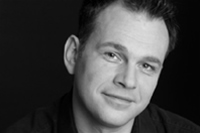TENOR
=Origin of the term=
The name "tenor" comes from the Latin word ''tenere'', which means "to hold". In medieval and Renaissance polyphony between about 1250 and 1500, the tenor was the structurally fundamental (or ‘holding’) voice, vocal or instrumental. All other voices were normally calculated in relation to the tenor, which often proceeded in longer note values and carried a borrowed Cantus firmus melody. Until the late 15th-century introduction of the contratenor bassus, the tenor was usually the lowest voice, assuming the role of providing a harmonic foundation. It was also in the 15th century that "tenor" came to signify the male voice that sang such parts; later it was applied not only to singers, but also instrumental parts occupying approximately the same register, such as the Tenor violin.
In music, a ''tenor'' is a male singer with a high voice (although not as high as the modern countertenor). In four part chorale-style harmony, it is the second lowest voice, above the bass and below the soprano and alto. A typical operatic tenor will have a range extending from the C below middle C to the C above middle C (C3-C5), though, in choral music, tenors are rarely asked to sing above G4, except in solos. In a mixed-gender choir, females may also sing as tenors.
Generally, the tenor roles are parallel to the soprano roles, in that they are usually the most sympathetic male roles; they play the hero, the lover, etc but there are the occasional villains (the Duke of Mantua in "Rigoletto" ; Lt. Pinkerton and Goro in ''Madame Butterfly''). A tenor is classified by several vocal traits, including range, tone quality, vocal lift points, and transition points within the singer's range.
In opera, distinctions are made between different types of tenor:
- Tenore drammatico, di forza or robusto: a powerful, rich, heroic tenor
- Heldentenor: the German equivalent of the tenore drammatico, however with a more baritonal quality; the typical Wagnerian protagonist
-Tenore leggero: a light, flexible tenor, specializing in the Mozartean repertoire, but also in the operas of Rossini, Donizetti and Bellini, and sometimes specializing in Baroque repertoire or in comical roles
- Tenore Buffo: a relatively weak voice with certain limitations, with a timbre that is not entirely appealing. Specializes in comic roles
-Tenore lirico or di grazia: a lightweight, graceful, lyric tenor
- Tenore (lirico) spinto: a lyric tenor with more "punch", therefore able to play more heroic roles
(from Wikipedia, the free encyclopedia)
|

